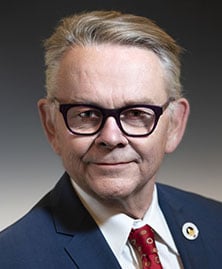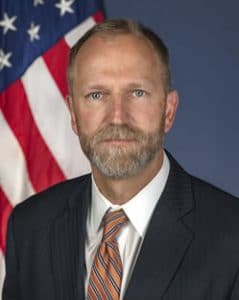CLEVELAND, Ohio (March 20) — The SMART Transportation Division (SMART-TD) and the Brotherhood of Locomotive Engineers and Trainmen (BLET) today filed a joint request urging the Federal Railroad Administration (FRA) to issue an Emergency Order (EO) to address employee safety conditions in response to the national COVID-19 (coronavirus) outbreak.
“The employees we represent are essential to the health, safety, and security of the nation. Therefore, it is necessary that the railroads take immediate and appropriate precautions to mitigate against the spread of the virus amongst their workforces, to minimize the exposure of their employees to the virus during the performance of their duties, and that Class I railroads maintain sufficient staffing levels to compensate for reduced headcounts caused by sick employees and family members, as well as to seamlessly handle predicted increases in volume once the virus begins to subside,” SMART-TD President Jeremy R. Ferguson and BLET President Dennis R. Pierce wrote in their petition.
Although emergency relief procedures were activated by FRA Administrator Ron Batory on March 13, many rail carriers have been slow to adopt, or in some cases have neglected to adopt, Centers for Disease Control and Prevention (CDC) measures to mitigate the spread of COVID-19. An action plan to help address the potential spread of the coronavirus among rail workers has not been issued by FRA and reports that Class I employees, both administrative and over-the-road personnel, have confirmed or suspected COVID-19 illnesses have been received.
The emergency request from the unions follows a letter their presidents sent on March 6 that requested, among other emergency remedial measures, thorough sanitation efforts in railroad facilities and on locomotives to prevent the infection of workers.
The unions’ request includes that railroads adhere to CDC guidelines in the following areas:
• Locomotive sanitation
• Sanitation of common areas used by employees
• Monitoring of employee temperatures
• Sanitation of crew transportation vehicles
The unions also seek that accommodations for meals, including long waits for food, be made in the documentation of hours of service reports for away-from-terminal personnel, including an additional 30 minutes to report in response to a call to work.
Procedures on how to handle employees who develop symptoms of the coronavirus requested by the unions reflect CDC guidelines, which include isolation, personal protective equipment, transport, and self-quarantine.
Finally, the presidents wrote, 25% of furloughed rail personnel should immediately be recalled to service to deal with anticipated shortages and staffing needs, in accordance with President Trump’s invocation of the Defense Production Act.
“To standardize and define the best protocols across the industry for the mitigation of the spread of the virus and the protection of employees, these safety precautions need to be immediately ordered by FRA,” Presidents Ferguson and Pierce stated.
Read the petition (PDF)
###
The SMART Transportation Division is comprised of approximately 125,000 active and retired members of the former United Transportation Union, who work in a variety of crafts in the transportation industry.
The Brotherhood of Locomotive Engineers and Trainmen represents nearly 58,000 professional locomotive engineers and trainmen throughout the United States. The BLET is the founding member of the Rail Conference, International Brotherhood of Teamsters.






